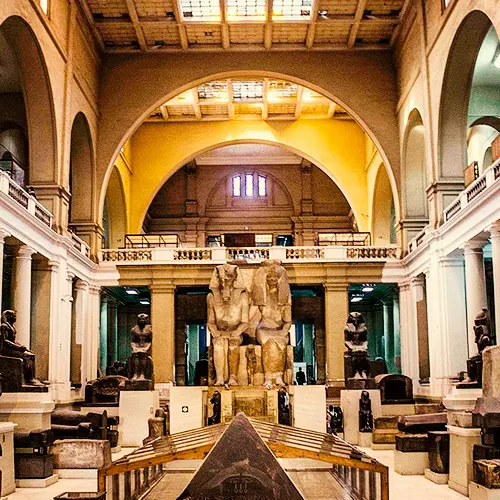
The National Museum of Egyptian Civilization will be the narrator for the achievements of the Egyptian civilization throughout human history. It will be the final home for the Egyptian royal mummies.
The idea of building this museum was a part of the UNESCO project in Egypt after the saving of the Nubian monuments, but the establishment stone was laid in 2002.
Fustat, the first Egyptian capital after the Arab Islamic conquest, was chosen to be the place for establishing this museum. UNESCO chose this place because it is more consistent with the museum concept, as the area is located at the crossroads of Egyptian history, and it includes many Coptic churches and monasteries, the Coptic Museum, the Ibn Ezra Temple, and the first mosque in Egypt, the Amr Ibn Al-Aas Mosque.
This museum will be the first in the Arab world focusing on the earliest civilization in history, as 50 thousand pieces will present the stages of Egyptian history from Predynastic, ancient Egyptian Kingdoms, the Greco-Roman period, Coptic, Islamic, and contemporary modern times.
- The first hall is the main hall. It will be a permanent exhibition. This exhibition will display the Egyptian civilization in a chronological concept through The Nile, Writing, Community, Material Culture, and Beliefs.
- The second hall is dedicated to displaying the royal mummies. The royal mummies will be displayed in a different concept, as each king will be exhibited beside his funerary furniture discovered inside his tomb and some documentaries.
- The third hall was opened in February 2017. It is a temporary exhibition with the name (Egyptian Crafts through the Different Eras). This temporary exhibition displays the history of four crafts in Egypt from the ancient Egyptian civilization to the present day. These crafts are pottery, textile, wood, and jewelry.
National Museum of Egyptian Civilization (MNEC), the Grand Egyptian Museum (the GEM), and the Egyptian Museum in Tahrir Square will be one of the most important museums in the world to exhibit the ancient Egyptian civilization. They are worth visiting.









